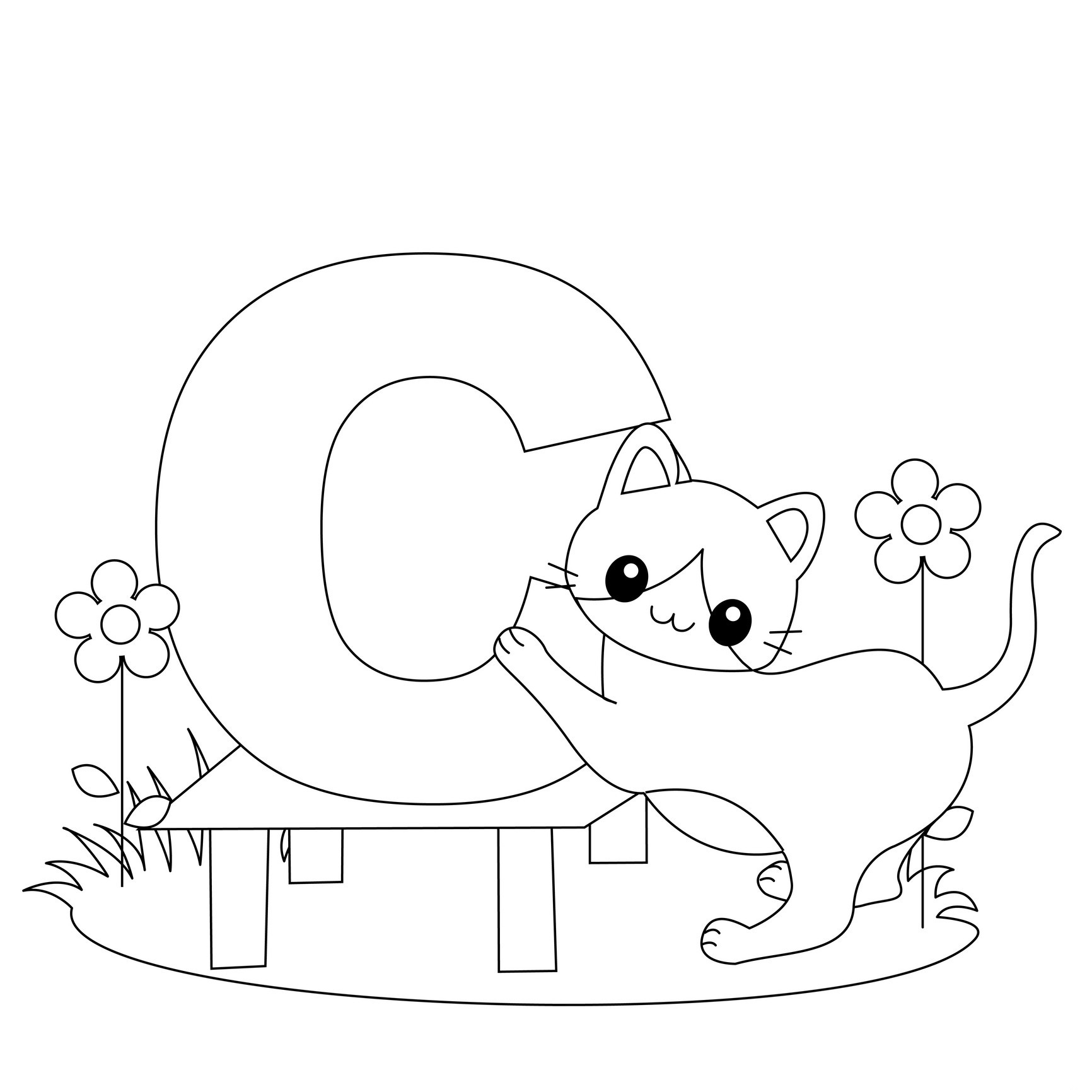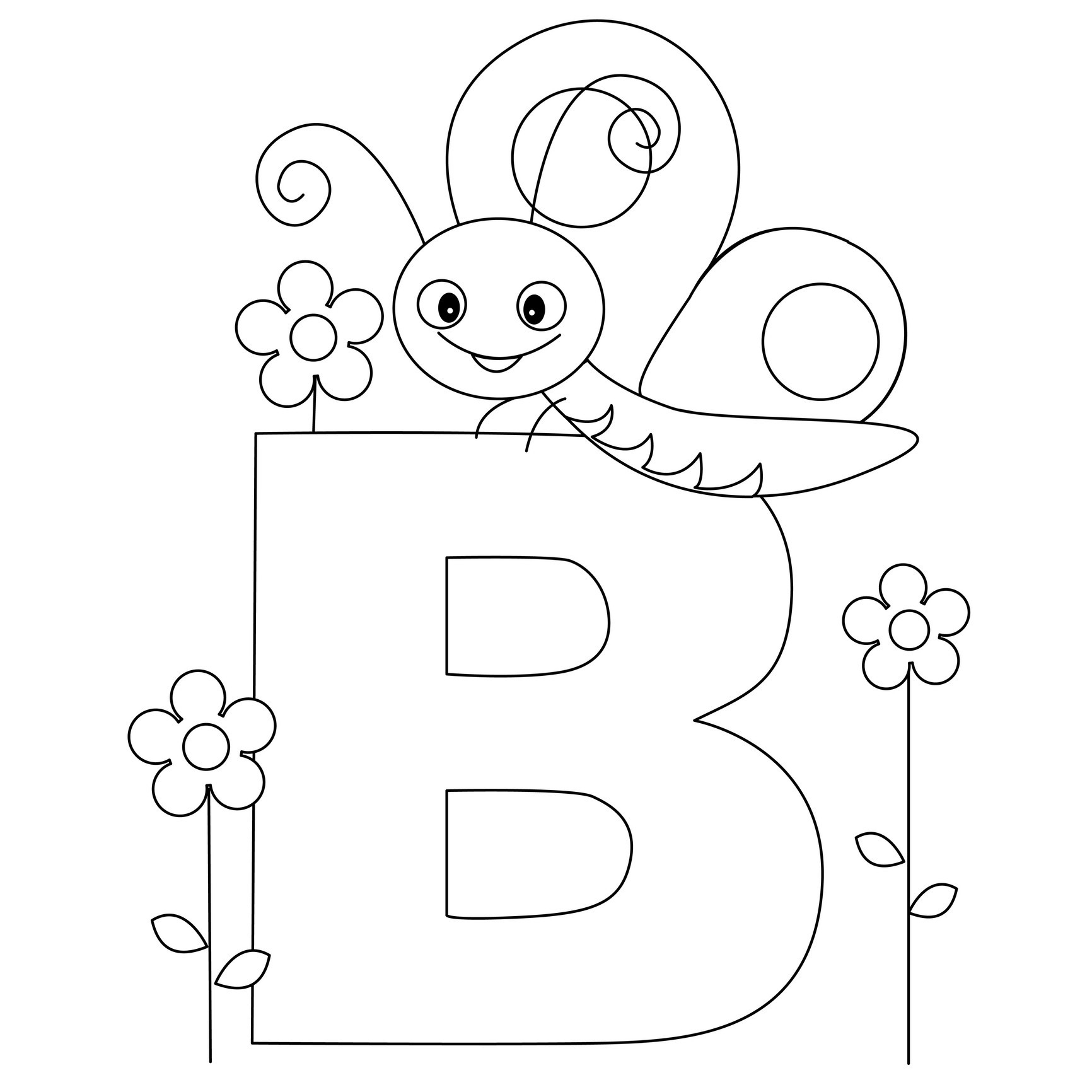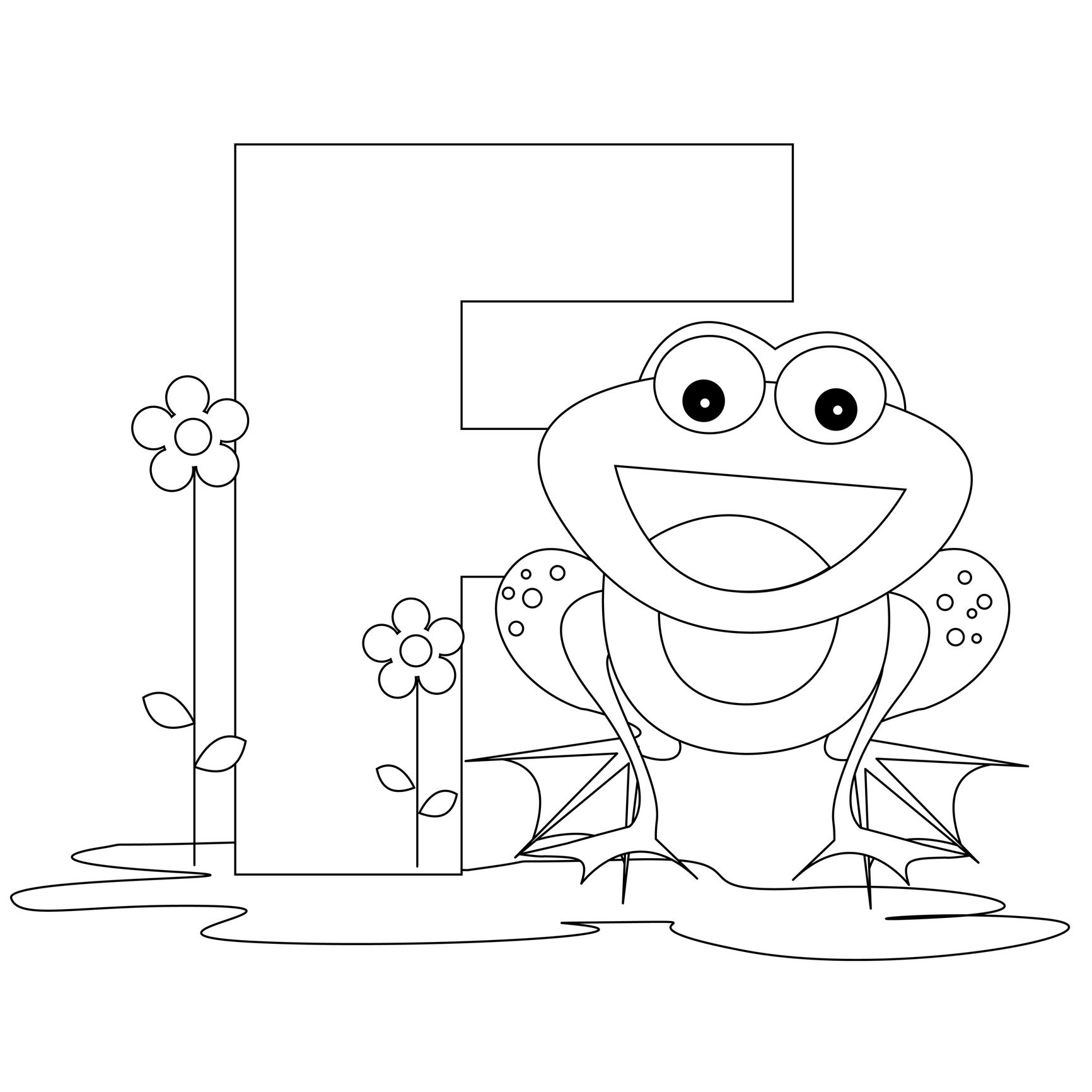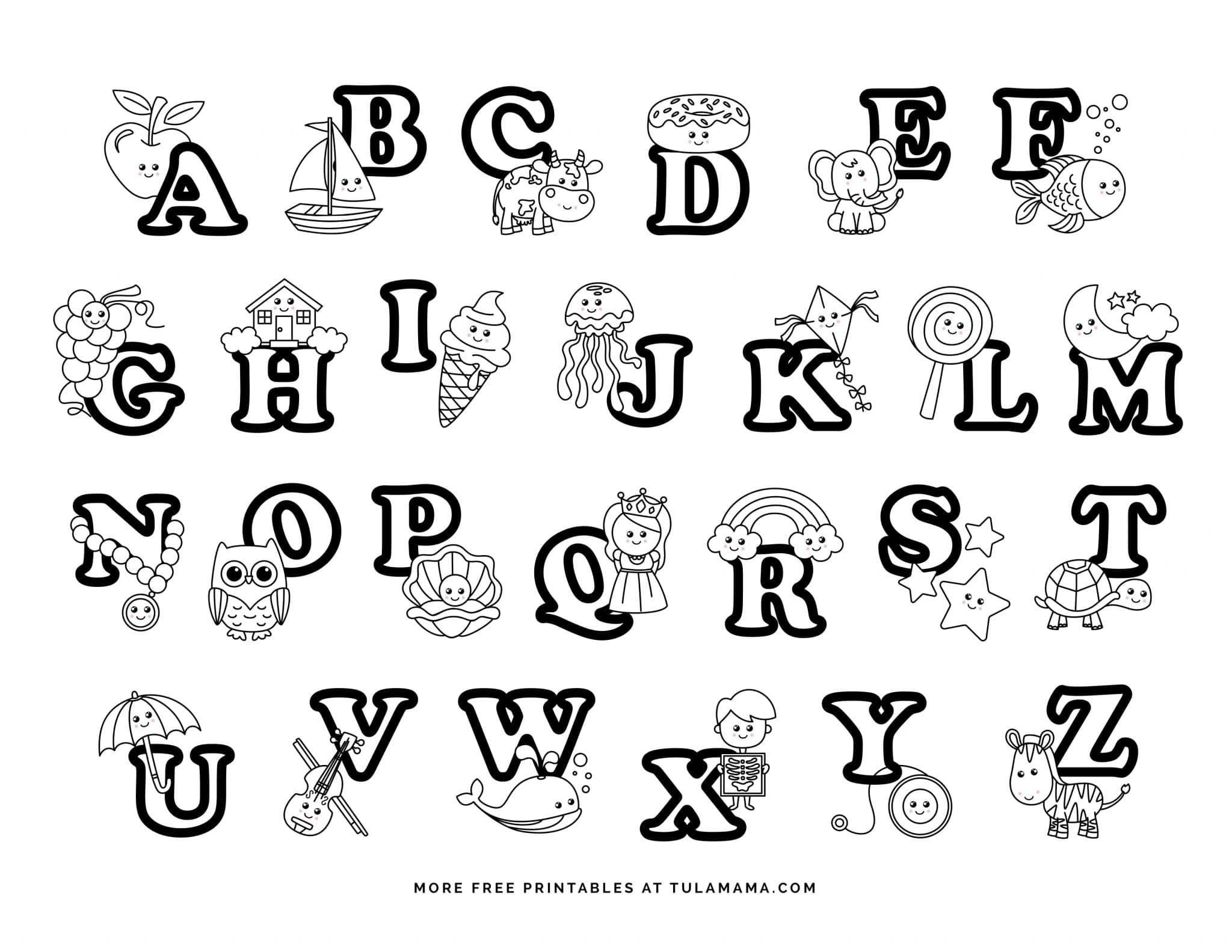Get ready to dive into the world of alphabet letters coloring pages printable! This engaging introduction will take you on a journey through the benefits, techniques, and educational uses of these printable coloring pages. Brace yourself for a colorful and imaginative experience!
In the following paragraphs, we will explore the various ways in which alphabet letters coloring pages can enhance learning, promote creativity, and provide endless hours of entertainment for children of all ages. Let’s embark on this exciting adventure together!
Introduction to alphabet letters coloring pages

Alphabet letters coloring pages are printable pages that feature individual letters of the alphabet accompanied by images or patterns that can be colored. These pages are designed to help children learn the alphabet in a fun and engaging way.
Using printable coloring pages for learning the alphabet offers several benefits. Firstly, it allows children to visually associate each letter with a corresponding image or pattern, making it easier for them to remember and recognize the letters. Additionally, coloring can help improve fine motor skills and hand-eye coordination, as children need to carefully color within the lines.
There are various types of alphabet letters coloring pages available. Some pages feature simple designs with one letter and a corresponding image, while others may include multiple letters on one page. There are also coloring pages that focus on uppercase or lowercase letters, as well as pages that incorporate tracing exercises to further reinforce letter formation.
Examples of different types of alphabet letters coloring pages
- Single letter coloring pages: These pages feature one letter of the alphabet along with a picture that starts with that letter. For example, the letter “A” may be accompanied by an image of an apple.
- Uppercase and lowercase pages: These pages provide separate sections for uppercase and lowercase letters. Children can color each letter and practice identifying the differences between uppercase and lowercase forms.
- Tracing and coloring pages: These pages combine coloring and tracing activities. Children can trace the letter with their finger or a pencil and then color the letter and accompanying images.
- Patterned letter pages: These pages feature letters filled with various patterns and designs. Children can color and embellish the patterns, making the letters visually appealing.
Importance of printable coloring pages for children

Printable coloring pages have become extremely popular for children’s activities due to several reasons. They provide a fun and engaging way for children to express their creativity, improve their fine motor skills, and promote imagination.Coloring helps children develop their fine motor skills by requiring them to use precise movements and coordination.
Holding and maneuvering crayons or colored pencils helps strengthen the muscles in their fingers, hands, and wrists. As they color within the lines or create their own designs, they learn to control their hand movements and develop better hand-eye coordination.Coloring
also encourages creativity and imagination in children. By providing them with pictures to color, they have the opportunity to explore different colors, experiment with mixing colors, and make choices based on their own preferences. This process allows them to express their individuality and develop their own unique artistic style.Furthermore,
coloring pages can serve as a starting point for storytelling and imaginative play. Children can create narratives around the characters or scenes they are coloring, giving them the opportunity to engage in imaginative thinking and develop their storytelling skills.
Examples of how coloring can promote creativity and imagination:
- Children can use different colors to give life to animals, plants, and objects, allowing them to create their own vibrant and imaginative worlds.
- They can experiment with patterns, textures, and shading techniques, which can enhance their understanding of visual aesthetics and artistic concepts.
- Coloring can also be a tool for self-expression, as children can choose colors that reflect their mood or emotions.
- Children can create their own original designs by adding details, patterns, or even combining different coloring pages to form a larger composition.
- Coloring can inspire children to think outside the box and come up with imaginative scenarios or stories related to the images they are coloring.
Coloring pages provide a multitude of benefits for children, fostering their creativity, fine motor skills, and imaginative thinking. They offer a screen-free and interactive activity that can be enjoyed at home or in educational settings, making them a valuable tool for children’s development.
If you’re looking for the lyrics to the famous Christmas song “12 Days of Christmas,” we have a printable version available for you. You can find it at 12 days of Christmas lyrics printable . This printable will make it easy for you to sing along and enjoy this festive tune with your family and friends.
Whether you’re hosting a Christmas party or just want to get into the holiday spirit, having the lyrics on hand is always a good idea. So, click on the link and get your printable lyrics now!
Learning the alphabet through coloring

Coloring pages can be a highly effective tool for teaching children the alphabet letters. The combination of visual stimulation and hands-on activity helps engage children in the learning process and enhances their understanding and retention of the letters. Here are some tips and techniques for using alphabet letters coloring pages as a teaching tool:
Enhancing Letter Recognition
Using coloring pages that feature individual alphabet letters can help children recognize and identify the letters more easily. Encourage children to color within the lines of each letter, emphasizing the shape and form of the letter while they color. This visual reinforcement helps reinforce letter recognition.
Letter-Sound Association
Pairing coloring pages with phonics activities can help children associate the alphabet letters with their corresponding sounds. As children color each letter, encourage them to say the letter sound aloud. This multisensory approach helps strengthen letter-sound association and aids in early reading development.
Fine Motor Skills Development
Coloring pages provide an excellent opportunity for children to develop their fine motor skills, which are essential for tasks such as writing. As children color within the lines of each letter, they practice their hand-eye coordination and control. This helps refine their fine motor skills, preparing them for more advanced writing skills.
Interactive Games and Activities
Incorporating games and activities into the coloring process can make it even more engaging and interactive for children. For example, you can play a game where children have to find and color all the letters of a specific color. Or you can create a scavenger hunt where children have to find objects that start with each letter of the alphabet and color them in.
These activities make learning the alphabet more enjoyable and memorable.
Reinforcement of Letter Order and Sequencing
Using coloring pages that display the alphabet letters in order can help children learn and reinforce the sequence of the letters. Encourage children to color the letters in the correct order, emphasizing the progression from A to Z. This helps develop their understanding of letter order and sequencing.By
If you’re up for a challenge and looking for some inspiration, we have a free printable for you. It’s called the “75 Soft Challenge,” and you can find it at 75 soft challenge printable free . This printable will guide you through a 75-day challenge designed to help you develop a softer and more compassionate mindset.
Each day, you’ll be given a simple task to complete, helping you cultivate kindness, empathy, and gratitude. So, if you’re ready to embark on this transformative journey, click on the link and download your free printable now!
incorporating coloring pages into alphabet learning activities, children can have fun while developing essential literacy skills. The combination of visual and kinesthetic learning through coloring enhances letter recognition, letter-sound association, fine motor skills, and reinforces letter order and sequencing. So, grab those crayons and let the alphabet coloring adventure begin!
Printable alphabet letters coloring pages for different age groups

Printable alphabet letters coloring pages are a great educational tool for children of all ages. They not only help children learn the alphabet, but also improve their fine motor skills and hand-eye coordination. However, it is important to choose coloring pages that are suitable for a child’s age and skill level.
Here, we will discuss the different levels of difficulty for alphabet letters coloring pages and provide examples for preschoolers, kindergarteners, and older children.
Levels of Difficulty
When it comes to printable alphabet letters coloring pages, there are different levels of difficulty to cater to various age groups. Here are some examples:
- Preschoolers:Coloring pages for preschoolers are usually simple and have large, bold letters. They often include simple illustrations that are easy for young children to color. These coloring pages are designed to introduce and familiarize preschoolers with the basic shapes of letters.
- Kindergarteners:Coloring pages for kindergarteners are slightly more complex than those for preschoolers. They may include smaller letters and more detailed illustrations. These coloring pages help kindergarteners practice their fine motor skills and develop their creativity.
- Older Children:Coloring pages for older children are more intricate and challenging. They may include uppercase and lowercase letters together, and the illustrations may be more detailed and intricate. These coloring pages are suitable for children who have already mastered the basic letter shapes and are looking for a greater challenge.
Choosing Appropriate Coloring Pages
When choosing printable alphabet letters coloring pages for children, it is important to consider their age and skill level. Here are some tips to help you choose appropriate coloring pages:
- Observe their skill level:Pay attention to your child’s coloring abilities. If they are still learning to hold a crayon or color within the lines, choose simpler coloring pages.
- Consider their interests:Choose coloring pages that align with your child’s interests. If they love animals, choose coloring pages with animal-themed illustrations.
- Gradually increase difficulty:As your child progresses, gradually introduce more challenging coloring pages. This will keep them engaged and motivated to learn.
- Encourage creativity:Choose coloring pages that allow for creativity and imagination. Look for pages with open-ended illustrations that allow your child to add their own unique touches.
By choosing printable alphabet letters coloring pages that are suitable for your child’s age and skill level, you can provide them with a fun and educational activity that will help them learn and develop important skills. Happy coloring!
Printable alphabet letters coloring pages for educational purposes

Printable alphabet letters coloring pages can be a valuable tool in the classroom, offering a fun and engaging way for children to learn the alphabet. These coloring pages can be used to reinforce letter recognition, phonics, and fine motor skills.
They are versatile and can be incorporated into various lesson plans to enhance learning experiences for children of different age groups and abilities.
Using alphabet letters coloring pages in the classroom
Teachers can utilize alphabet letters coloring pages in a variety of ways to support their lesson plans. Here are some examples:
- Letter recognition: Teachers can provide coloring pages that feature a specific letter. Students can color the letter and identify objects or words that begin with that letter.
- Phonics practice: Coloring pages can be used to reinforce phonics by asking students to identify the sound of the letter and color pictures that represent words with the corresponding sound.
- Vocabulary building: Teachers can choose coloring pages that include a variety of objects or animals starting with different letters. Students can color the pictures and practice saying the names of the objects, thus expanding their vocabulary.
- Letter formation: Coloring pages can also help children practice their handwriting skills. Teachers can provide pages with dotted letters and encourage students to trace the letters before coloring them.
The benefits of using printable coloring pages for educational purposes, Alphabet letters coloring pages printable
Using printable coloring pages for educational purposes offers several advantages for both teachers and students:
- Engagement: Coloring pages provide a hands-on and interactive activity that can capture children’s attention and keep them engaged in the learning process.
- Creativity: Coloring pages allow children to express their creativity by choosing colors and decorating the letters according to their preferences.
- Fine motor skills development: Coloring requires children to use their fine motor skills, such as holding a crayon or pencil and staying within the lines, which helps strengthen their hand muscles and improve coordination.
- Reinforcement of learning: Coloring pages provide a visual representation of letters and concepts, reinforcing what children have learned in class and aiding in their retention of information.
- Individualized learning: Printable coloring pages can be adapted to suit the needs and abilities of individual students, allowing for personalized learning experiences.
By incorporating printable alphabet letters coloring pages into their lesson plans, teachers can create a dynamic and effective learning environment that promotes letter recognition, phonics, vocabulary building, and fine motor skills development. These coloring pages offer numerous benefits and can be a valuable educational tool for children of all ages.
Tips for printing and using printable coloring pages

Properly printing and using printable coloring pages can enhance the coloring experience for children. Here are some tips to help you get the best results:
Selecting the right paper
Choosing the right paper is crucial to ensure that the colors look vibrant and the pages withstand the coloring process. Here are some tips for selecting the right paper:
- Use heavyweight paper: Opt for paper that is thick and durable, such as cardstock or watercolor paper. This will prevent the colors from bleeding through and make the pages sturdier.
- Consider the finish: Decide whether you want a smooth or textured finish for the coloring pages. Smooth paper is ideal for colored pencils, while textured paper can add depth and interest when using markers or crayons.
Choosing the right coloring materials
The choice of coloring materials can greatly impact the final result. Here are some tips for selecting the right coloring materials:
- Colored pencils: Colored pencils are versatile and allow for precise coloring. Look for pencils with a soft core for smooth coloring.
- Markers: If using markers, choose ones that are specifically designed for coloring. Water-based markers are a good option as they are vibrant and easy to blend.
- Crayons: Crayons are a classic choice and are suitable for younger children. Look for crayons that are non-toxic and have a smooth texture.
Printing tips
When printing the coloring pages, follow these tips to ensure optimal results:
- Print in high resolution: Set the printer to print in high resolution to ensure clear and crisp images.
- Check printer settings: Adjust the printer settings to match the type of paper you are using. This will prevent smudging or ink bleeding.
- Print a test page: Before printing multiple copies, print a test page to check the colors and quality of the image.
Organizing and storing printed coloring pages
Keeping the printed coloring pages organized and properly stored can help preserve them for future use. Here are some tips:
- Use folders or binders: Store the coloring pages in folders or binders to keep them neat and organized. Label the folders or binders by theme or alphabet letter for easy reference.
- Protective sleeves: Consider using protective sleeves or page protectors to prevent the pages from getting damaged or torn.
- Create a coloring book: If you have multiple coloring pages, you can create a coloring book by binding them together. This will make it easier to flip through and use the pages.
Ideas for extending the learning experience with alphabet letters coloring pages: Alphabet Letters Coloring Pages Printable

Coloring pages are a great way for children to learn and practice the alphabet. However, you can enhance their learning experience by incorporating other activities alongside coloring. By doing so, you can make the learning process more engaging and interactive for children.
Letter recognition games
To reinforce letter recognition skills, you can play various games with your child using the colored alphabet letters. Here are some examples:
- Scavenger Hunt: Hide the colored letters around the house or in a designated area. Ask your child to find specific letters and identify them as they are found.
- Memory Game: Create a set of letter cards using the colored alphabet letters. Place them face down and take turns flipping two cards at a time. The goal is to find matching pairs of letters.
- Alphabet Bingo: Make bingo cards with different letters and use the colored alphabet letters as calling cards. As you call out a letter, your child can cover the corresponding letter on their bingo card.
Alphabet crafts
Another way to extend the learning experience is by incorporating alphabet crafts into coloring activities. This allows children to explore the letters in a hands-on and creative way. Here are a few craft ideas:
- Letter Collage: Have your child choose a letter and then cut out pictures from magazines or draw pictures that start with that letter. They can then glue the pictures onto a piece of paper to create a collage.
- Letter Tracing: Print out large letters on colored paper and have your child trace over them using different art materials such as crayons, markers, or colored pencils.
- Letter Mobile: Cut out multiple copies of each letter and attach them to strings or ribbons. Hang the letters from a hanger or a branch to create a mobile. As your child colors the letters, they can identify them and practice letter recognition.
Cohesive learning experience
To create a cohesive learning experience, you can combine coloring, letter recognition games, and alphabet crafts. Start by coloring the alphabet letters together, discussing the letter names and sounds. Then, play a letter recognition game using the colored letters. Finally, engage in an alphabet craft activity related to the letters that were colored.
This sequential approach allows children to reinforce their learning and connect it to other activities.By incorporating these ideas, you can extend the learning experience with alphabet letters coloring pages and make it more interactive and enjoyable for children.
